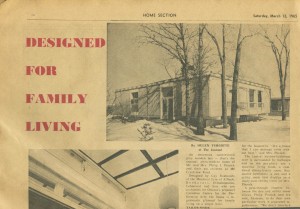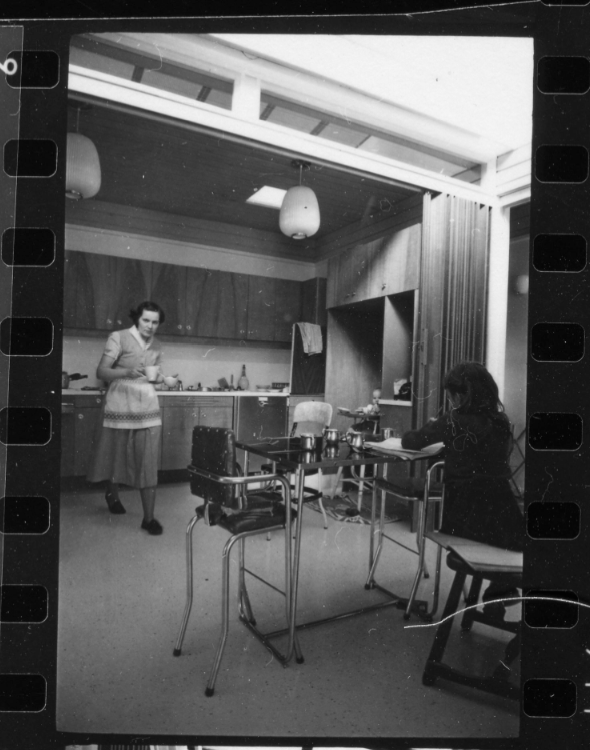Clearing out one’s family home is something you often read about. Stories abound around the subject of inheritance and dividing up the family plot or sharing out the silver. My oldest sister K has been telling me about They Left Us Everything: A Memoir by Plum Johnson. I will read it. In the meantime I made the long and complicated journey to Ottawa from Missoula to help my sisters S and K—the only siblings left in Canada—with the clearing out of the house most of us grew up in and which is no longer inhabited by my parents. Our family home, which we call ‘460’, is crammed with more than fifty years of my mother’s and father’s lives and the imprint of seven children having grown up within its walls.

Part of my journey ‘home’: the train from Toronto to Ottawa.
Adults handling objects belonging to their younger selves or the intimate possessions of their dead parents and siblings feels like an ancient ritual. The letting go of these physical talismans enables us to move forward divested of the symbolism of these objects and free from their hold. I remember reading in Hermione Lee’s biography of Virginia Woolf that the writer felt she only really started making decent work once her mother was dead. In the saying goodbye comes an obvious, or perhaps a subtle, lurching forward into an unknown. This is how I felt during the one solitary week I was in Ottawa: things were shifting slowly but with force.

What do you do with the pin cushion belonging to your mother that you remember from a time when it was bigger than your hand?

The original paint chips from the mid-fifties used for the interior and exterior of the house I grew up in.

Photo magazines drying out in the sunshine. Boxes and boxes of these were left to gather mould in a damp garage. What to do with gems like this that could easily fill a month of perusing and musing.
While in Ottawa I visited my father who is in a home that can cater to his advanced Alzheimer’s. Despite being able to communicate very little—his speech is gone and his walking is minimal and he can no longer feed himself—my father smiled when he saw me and managed to say my nickname. His one good eye fastened onto me with the recognition that I was one of his children. I felt so much love coming from that smile and that eye of his. An eye that created a body of photographs which was another reason for my trip to Canada.
My father was an artist. But a very disorganised one. He left behind photographs which show a fascinating trajectory from his black and white street photography in the 1950s and 60s to an embracing of the snapshot aesthetic from the 1970s onwards which expresses, as the years progress, an increasing frustration with his encroaching dementia and the feeling of being trapped in the Ottawa suburbs. He photographed bananas and oranges and stones against various backdrops giving them fresh contexts and narratives. He photographed the TV screen clicking the shutter just as Harper’s face takes on a demonic look or just as the ring goes on the finger of the first gay marriage in Massachusetts.

Ottawa Journal Home Section, Saturday, March 13, 1965. The house was already eight years old by the time this article appeared. There was a petition to try and have its construction halted as modernist architecture didn’t really ‘fit the neighbourhood’.

My mother ferrying a cup of coffee to the table while I sit in my high chair where the fridge eventually was to go and one of my sisters does her homework.

The fridge as it is today with the photos my mother liked to look at before she died. It all needs to be dismantled. This is where my high chair stood all those years ago.

My parents’ beautiful kitchen which once was bursting with life, now being emptied in preparation for selling the house.
My father documented his life within strict constraints, and in doing so created a profound series of images that speak of the limits of experience. Before I arrived, my sisters K and S had already spent days and days sorting through box of after box of colour prints putting them into thematic piles: construction sites, still lives with bananas, rocks, oranges, photos of shadows, selfies, notable people, artists, street scenes, graffiti, newspaper headlines, TV screens, computer screens (some of these unsavoury), family members, photos of his photos which he often annotated or cut up and rephotographed, and thousands of photos of the piles of newspapers and books which he and my mother lived amongst for decades. There is something of the feeling of being trapped that these photos convey and yet also a sense of freedom that he was able to see so much beauty in such a cloistered life. And there is obsession here, too. Lots of obsession and perhaps a touch of narcissism. He was the original selfie addict.

Some of the piles of my father’s photos. There were thousands, maybe even tens of thousands. At least now the beast of his colour archive is somewhat under control.
But what to do with them all. Where to house them. Do we make a book or try and mount a show or both. At the moment there are too many questions. And too few answers. As I was flying out of Toronto airport on my way back to Missoula, having only scratched the surface of all that needs doing, I noticed a series of photographs right next to the check-in area called The Amazon of the North by the Canadian photographer Aemon Mac Mahon. These photos depict the destruction of the Canadian landscape. Old growth trees as dead as matchsticks lie in piles the size of buildings. It seemed odd to me that photos displaying the destruction of the environment should be in an airport of all places. A building whose sole existence relies on fossil fuels, tourism, consumption and growth—ingredients that contribute to the destruction of the planet. This is exactly the sort of thing my father taught me to look out for. Never trust the image completely; always look below it, above it and way beyond it. Question its veracity. Looking beyond the surface is what artists do and my father was truly an artist—even if he had a hard time acknowledging it himself.



